Photo
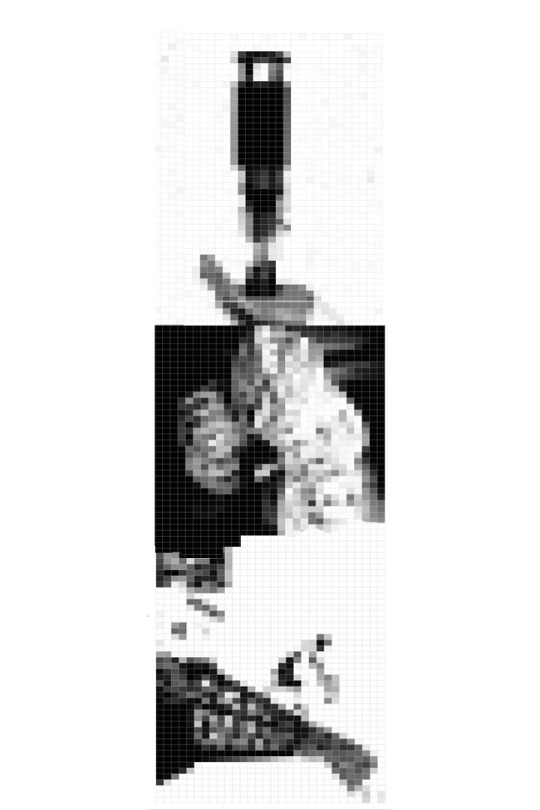
MAPPING - MORE PLANNING
I have come up with a more solidified idea of what I want to do for the mapping project. I want to display time-lapse photographs of my progress in knitting a panel that incorporates images from the three projects I have completed so far. The image above is the pattern I made for this.
Part of my trouble in deciding on an idea was incorporating my prompt (Gravy Boat Boils Soon After Slicing Iceberg Lettuce.) I get a very narrative feel from this sentence. It’s likely because of the specified order of events. By incorporating the projects that I’ve done sequentially into a knitted panel, I think my mapping project will address this. The act of knitting is also domestic, like the cooking tasks the prompt describes.
I’m really excited to get started with this. I just ordered some black, white, and grey yarn, and some new needles. I hope to begin knitting within the next few days.
1 note
·
View note
Photo
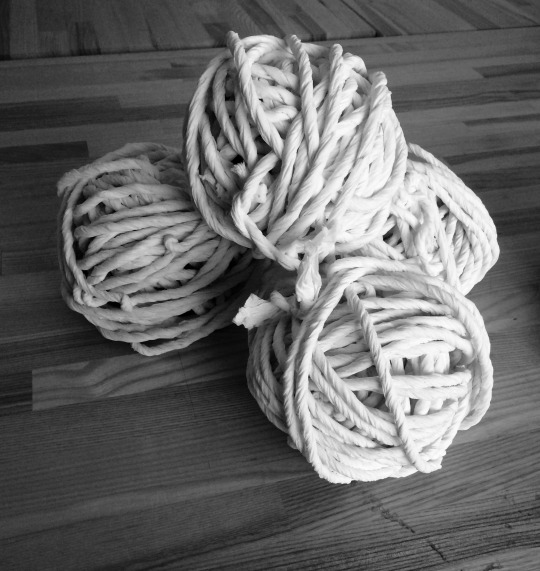

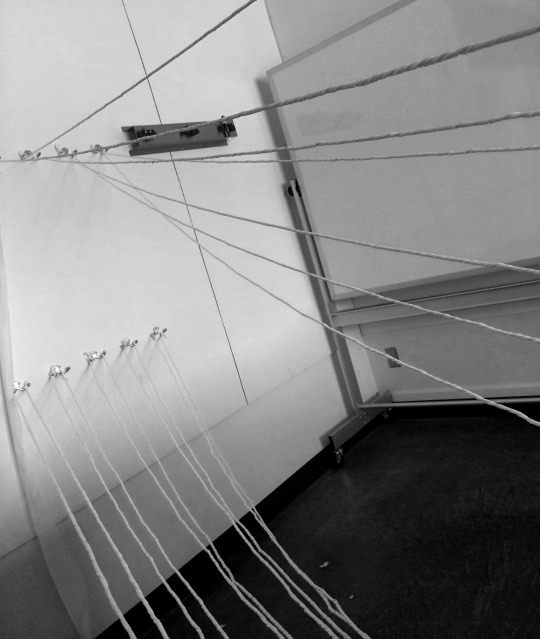
ON MAKING YARN...
The yarn-making process has been much more time-consuming than I originally thought it would be. It has been really interesting experimenting with making the toilet paper yarn. It has turned out surprisingly strong, and I think it is really cool watching the toilet paper get wound up.
To make it, I tie one end of the toilet paper to something at one end of a long space (either a hallway or large studio.) I then unwind the roll until I get to the other end, and feed it into a screw gun. With the rotation direction set to "forward," I turn on the screw gun until the yarn is wound tightly. Then I take the end out of the screw gun and tie it to something so the strands stay fairly stretched. I think it is more time effective to make a bunch of single strands at a time, so I'll repeat this process until I have quite a few done. Then I take two wound strands, feed them into the screw gun, and wind them on "reverse". This is a way to ensure that the strings won't unravel.
1 note
·
View note
Text
Anti-fashion (Week 14)
This week in class we have discussed the Russian Constructivist movement in the early 20th century as a time in which a group of avant-garde artists and intellectuals attempted to push back against the fashion of the time, and against the concept of fashion in general. They tried to take what had become an art (fashion) and refigure it to fit in the new ready-made economy. This movement was incited by extreme political change and unrest, but something similar can be seen in contemporary fashion with a movement called normcore. Normcore is the rejection of style, with a desire that is somewhat similar to that of the Constructionists, to blend in in a society where fashion is typically used to stand out.
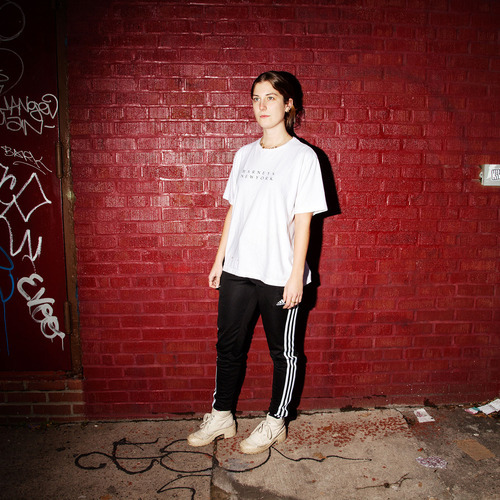
The above image gives an example of normcore “fashion.” The woman in it wears a slightly oversized t-shirt, track pants, and fairly basic sneakers that hint at orthopedic shoes. This movement, apparently, does not stem from irony. In an article in New York Magazine, a fashion writer Jeremy Lewis is quoted saying about his normcore style: “It's a very flat look, conspicuously unpretentious, maybe even endearingly awkward. It's a lot of cliché style taboos, but it's not the irony I love, it's rather practical and no-nonsense, which to me, right now, seems sexy. I like the idea that one doesn't need their clothes to make a statement.”
Sources:
http://nymag.com/thecut/2014/02/normcore-fashion-trend.html
0 notes
Text
What's "In Vogue?"
As Anne Hollander discussed in the reading of hers that we did this week, with the invention of the camera came the adoption of a “camera vision,” a new way of seeing things in which an image is ingested at a glance. This process was extremely slow, however. It took the collective eye a relatively long time to adjust to the view of clothing and fashion that is conveyed in a photograph. Eventually, photography created and adjusted to this camera vision. Vogue magazine, a major institution in the representation of fashion for almost a century, clearly illustrates this transition through the representations they chose to put on their covers. Vogue featured illustrated covers in the beginning, despite the camera’s invention in the mid-19th century. Below is a picture of their first cover, from 1892.
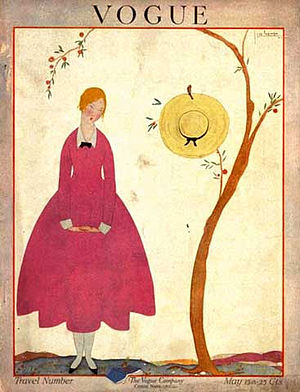
The portrayal of fashion in this image is definitely dictated by the medium. Because it is an illustration as opposed to photography, the viewer really only gets a silhouette view of the dress the figure is wearing. No pattern or texture is shown.
The magazine included a photographed cover for the first time in the July 1932 issue, but used photography only sparsely in their cover design until the 1940s. Eventually, the medium became the sole way of conveying fashion images, as society adjusted to the camera vision. This is an image of a more recent Vogue cover, this one from 2009.
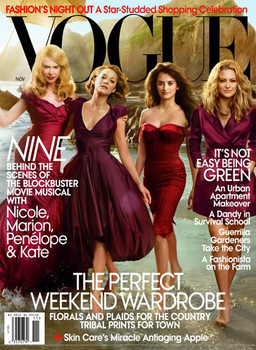
This image clearly conveys the permeance of the camera vision. The viewer looks at this photographed picture and immediately makes an assessment that these women are fashionable. Various assessments about what was in style can be made, such as the emphasis on v-neck and sweetheart necklines and jewel tones.
As Anne Hollander discussed in the reading of hers that we did this week, with the invention of the camera came the adoption of a “camera vision,” a new way of seeing things in which an image is ingested at a glance. This process was extremely slow, however. It took the collective eye a relatively long time to adjust to the view of clothing and fashion that is conveyed in a photograph. Eventually, photography created and adjusted to this camera vision. Vogue magazine, a major institution in the representation of fashion for almost a century, clearly illustrates this transition through the representations they chose to put on their covers. Vogue featured illustrated covers in the beginning, despite the camera’s invention in the mid-19th century. Below is a picture of their first cover, from 1892.

The portrayal of fashion in this image is definitely dictated by the medium. Because it is an illustration as opposed to photography, the viewer really only gets a silhouette view of the dress the figure is wearing. No pattern or texture is shown.
The magazine included a photographed cover for the first time in the July 1932 issue, but used photography only sparsely in their cover design until the 1940s. Eventually, the medium became the sole way of conveying fashion images, as society adjusted to the camera vision. This is an image of a more recent Vogue cover, this one from 2009.

This image clearly conveys the permeance of the camera vision. The viewer looks at this photographed picture and immediately makes an assessment that these women are fashionable. Various assessments about what was in style can be made, such as the emphasis on v-neck and sweetheart necklines and jewel tones.
image sources:
http://www.examiner.com/article/tom-sturridge-is-gorgeous-fashion-spread-vogue-us-nov-and-on-his-way-to-superstardom
http://en.wikipedia.org/wiki/Vogue_(magazine)
0 notes
Text
The Resurgence of Sewing (Week 11)
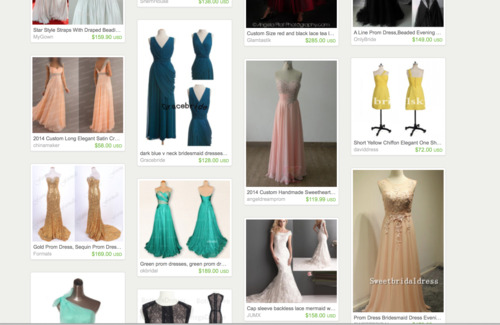
(sample of handmade evening dresses for sale on etsy.com)
In high school, when it was time to buy my prom dress, I chose to skip the factory-made ones that my peers were buying at the mall and opted instead for a custom made dress purchased on the website etsy.com. Etsy serves as an artisan marketplace for individuals selling all sorts of handmade things, including clothing. For me, this seemed like the perfect choice. I provided the seller with my measurements and chose from a selection of textiles and in return I got a dress that I was sure would fit me perfectly, as well as one that I could be sure no one else at my prom would be wearing. This sort of handmade, do-it-yourself craftiness has seemed to have a form of resurgence. It is now trendy for things to be handmade, or for people to even sew clothes themselves. Below is an infographic from the United Kingdom that illustrates sewing’s resurgence in popularity.
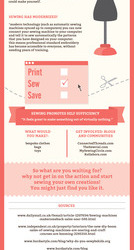
We have been talking this week in class about the transformation in the 19th century from custom made to ready to wear clothing. This new neo-artisan movement seems to be taking some of clothing manufacture backwards in time. However, it is very unlikely that we will return to the clothing economy of the past. Our situation has changed too much, and people have likely gotten too accustomed to immediate purchase and fast fashion to go back to a system where they have to wait for a specific garment to be made.
Images:
www.etsy.com
http://visual.ly/resurgence-sewing
0 notes
Text
The Blurring of Class Barriers (Week 10)
The past week in class we have discussed the ability of the modern paintings done in the 19th century by artists such as Manet and Morisot to bridge class gaps. These pieces have a strong tendency to blur the line between women of different classes in their portrayals. For example, the two Manet paintings shown below feature very different subjects. The first, Plum Brandy, depicts a young woman seated in a restaurant or café. She is alone and rests her cheek on her hand in a gesture that indicates boredom. The viewer can discern by her solitude, cigarette, and drink that she is a working class woman. The second painting is titled The Monet Family in their Garden at Argentuil. The female subject of this piece, Claude Monet’s wife Camille, is likely of a much higher social standing than the woman in Plum Brandy.This fact, however, is far from evident in the two womens’ clothing. Both wear similar black hats with a light-colored trim. Camille Monet’s dress is not shown in as much detail as the woman’s in Plum Brandy. Some similarities can still be seen though, such as the lace cuff on the sleeves of both dresses. This lace, before the era of modern painting, would have been something reserved only for the dress of the wealthy. However, Manet’s paintings blur the lines between the classes. A similar contrast between the modern works and those from the Early Modern period can be seen in the red bow on the skirt of the woman in Plum Brandy. Before Manet’s time, the price of red dye and pigment reserved it only for the wealthiest of clientele. The modern portrait does not concern itself with this discrepancy.

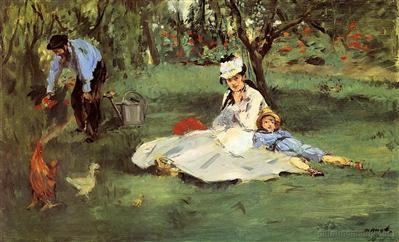
Image sources:
https://www.nga.gov/collection/gallery/gg86/gg86-53034.html
http://www.paintingmania.com/monet-family-their-garden-argenteuil-128_4595.html
0 notes
Text
Something Old, Something New (Week 7)
This past week, we have been comparing the "deep wearing" of clothing during the Early Modern period to the fast fashion of today. The standard from the 12th through 17th centuries was for clothing to have a deep-rooted meaning. This can be seen especially in paintings, where the clothes in many senses seem to wear the subject. Clothes had specific meanings, and the wearer embodied these connotations when he or she put them on. In modern times, however, this is not seen as often. Fast fashion retailers such as Zara and Forever 21 churn out clothes very quickly. The clothes are inexpensive and don’t last long, which is all right because, by the time they fall apart, they are passé and the next trend is ready for consumption.
There is, however, a modern occasion where “deep wearing” lingers: weddings. Women put on a wedding dress and automatically fill the role of the bride. Many pictures are taken, partially to show off the dress, as was the case with the portraits made in the Early Modern Period. For example, the bride in the picture below looks beautiful, but the photograph is clearly focusing on the artistry of her dress. Her persona is completely one of a bride; the transformation is aided by her clothing. This sort of deep wearing can also be seen in the wedding tradition of incorporating something old, something new, something borrowed, and something blue. These things all have a deep significance and an association that is transferred to the wedding when they’re worn by the bride.
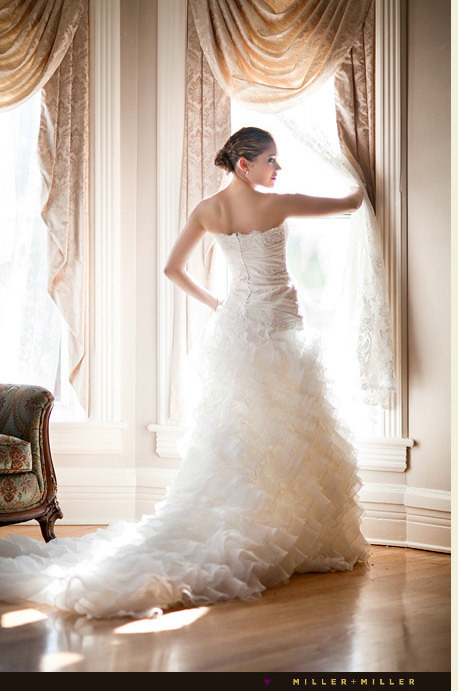
Photo source: http://www.chicagoillinoisweddingphotography.com/category/patrick-haley-mansion-wedding-photographer/
0 notes
Text
Exoticism as a Universal Concept (Week 6)
In “Fashion for the Foreign: the Taste for Exotic Textiles and Dress in Momoyama and Edo Period Japan,” Anna Jackson explains the influential force of exoticism on Japanese fashion. Just as the Western world dressed in Japanese-influenced fashions to show their wealth, wearing European fashions in Japan during the Edo period was a sign of high social status.
This relationship seems especially interesting to me considering Lipovetsky’s assertion that fashion only exists in European culture. Exoticism seems an integral part of fashion and a driving force behind fashion change. The occurrence of this sort of phenomenon in Japan further discredits Lipovetsky’s theory, and relates the fashion changes that were going on in Eastern culture to those in the West. Clearly, Japanese clothing was not devoid of fashion.
The following image shows a transformation in fashions from the early Edo period to the Meiji era, around the turn of the century. The slow influence of Western fashion seems clear. Based on Jackson’s argument, this change appears to have begun with the exoticism of the Edo period. European-style dress (much like that shown in the image to the right) became increasingly popular as costume. Slowly, the exotic styles had more and more influence over day-to-day dress.

I
Image source: http://www.museevirtuel-virtualmuseum.ca/edu/ViewLoitDa.do;jsessionid=7779D11E0272C5E083180E0F02BCD2C3?method=preview&lang=EN&id=12943
0 notes
Text
Vintage Inspirations
This week in class we have been discussing the struggle in fashion between past and present. Marie Simon’s piece “Historicism” explores the tendency for people to draw inspiration from older fashions. During the Romanticist era of the 19th century, there were costume balls dedicated toward dressing up in the clothing of a different time period. Allusions to clothing of the past are also evident throughout artworks of the time. As Karl Gutzkow explains in “Fashion and the Modern,” “Fashion does not reject the old-worldly […] The modern does not reject the old, but rather either molds it according to its own tast or drives it to an extreme where it becomes comical, or refines it in some other manner.
I think this form of modernity can be seen in fashion today. Fashion designers take inspiration from vintage clothing designs and change the aesthetic just enough to make it modern. Take for example, the resurgence of haute couture in the style of the 1950s and ‘60s, especially with the recent popularization of TV shows such as Mad Men that take place in this era.
One can see this sort of inspiration in design campaigns like that pictured below, which is for Louis Vuitton's Fall 2010 line.
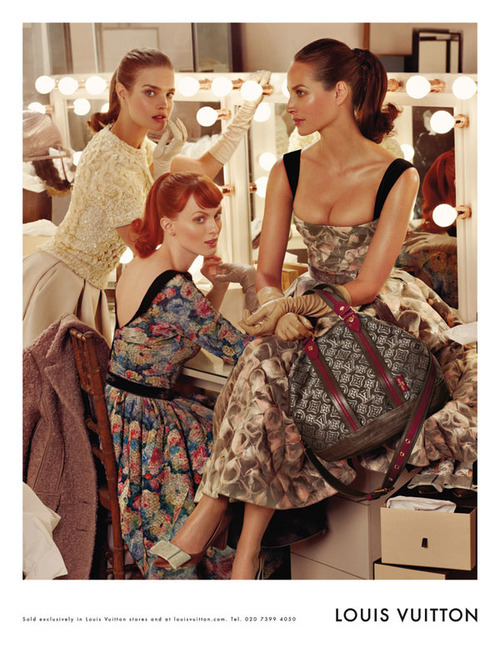
The similarities between this image and the one below (a picture of a 1950s sewing pattern) are clear. The full skirt and the presence of gloves in the Louis Vuitton advertisement, for example, obviously drew inspiration from the clothing of the '50s. There are also some clear modernizing adjustments. The gloves are lengthened, the necklines are lowered, and the fabrics are changed to reflect a more modern ideal.
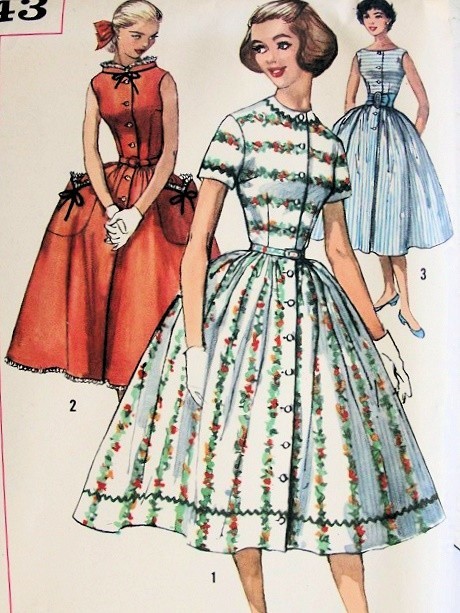
0 notes
Text
Conspicuous Consumption in the Modern World
In his piece “Conspicuous Consumption”, Thorstein Veblen discusses peoples’ desire to show their wealth, status, or level of leisure through consumption of extravagant things. The essay was a section from his book, The Theory of the Leisure Class, which was published in 1899. At that time, the consumption that Veblen was seeing involved dresses woven in gold and emblazoned with precious jewels.

The same sort of conspicuous consumption can be observed in modern times. The clearest examples are probably those occurring in China. By 2015, the country is expected to account for about 20 percent of the global luxury market. The consumption is clear. A 2009 study of well-off people in China showed that 90 percent of them had purchased designer handbags in the last year. There is an effort to offset this luxurious consumption, especially of foreign goods. In 2011, Beijing instituted a law banning decadent outdoor advertising. President Xi Jinping has also launched a campaign against extravagant consumption. These efforts seem to be making some ground (French cognac company Rémy Cointreau stands to lose 20 percent of their profits in China due to the changes) but the consumption continues. China has, in the last year, become Rolls Royce’s number one market.

Sources:
http://blogs.wsj.com/chinarealtime/2009/10/13/chinese-are-the-new-kings-of-bling/
http://luxurysociety.com/articles/2011/09/the-decline-of-conspicuous-consumption-in-china
http://www.businessweek.com/articles/2014-01-09/chinas-crackdown-on-conspicuous-consumption-hasnt-slowed-down-rolls-royce
http://english.peopledaily.com.cn/90001/90778/90860/6991640.html
0 notes